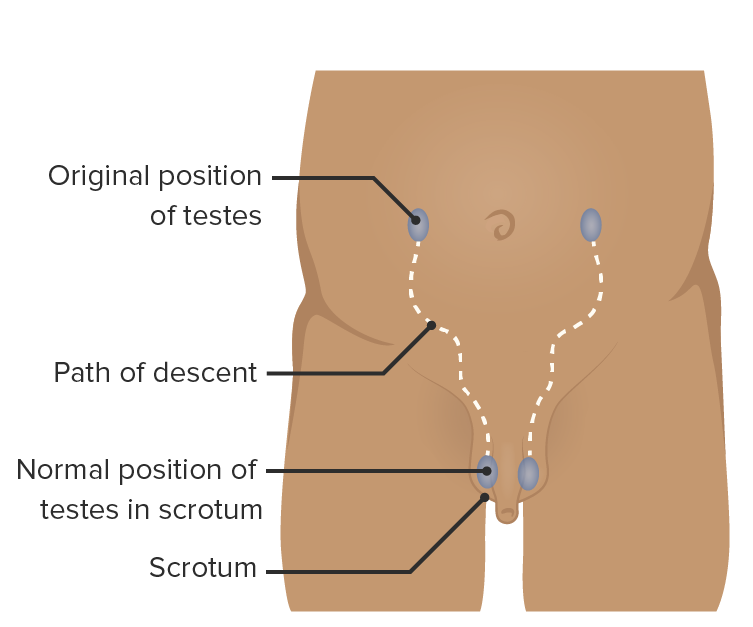Playlist
Show Playlist
Hide Playlist
Inguinal Region
-
Slides Anatomy Inguinal Region.pdf
-
Reference List Anatomy.pdf
-
Download Lecture Overview
00:01 So now I want to look at a really specific but important region of the abdominal wall and it's known as the inguinal region It's quite a complex region, but it's vitally important. 00:13 So let's just have a very brief introduction to the inguinal region. 00:16 It's both on the left and right side of the midline. 00:20 You can see it's kind of depicted here. 00:22 It extends very much from the anterior superior iliac spine superiorly. 00:27 And it runs all the way down to the midline, just above the external genitalia, but it is intimately associated with the formation and the working of that external genitalia. 00:37 Here we can see both the right and the left inguinal region. 00:41 It's an important region because it really is a point of exit and entry for various nerves, blood vessels, and other tubes that may pass to and from the external genitalia. 00:53 So it's an important region for how the testes can communicate with the inside of the body. 00:58 The female inguinal region is no less significant, but it doesn't actually have as many major structures and that's part leads you to the embryological development and how the biologically female and the biologically male are very different in this regards. 01:13 So the inguinal region, therefore is very different. 01:17 So let's just go on and have a look at the surface anatomy of this inguinal region. 01:21 So as I showed on the previous slide here is the right inguinal region. 01:25 You can see it is situated within the right lower quadrant. 01:28 And you'd also have one in the left lower quadrant as well. 01:32 A slightly closer up look and really it's bony landmarks that we need to be familiar with. 01:37 But first of all, the inguinal ligament is an important structure that really demarcates the inferior aspects of this inguinal region. 01:44 It's running from the anterior superior iliac spine all the way down to the pubic tubercle you can see there. 01:51 Situated just above the inguinal ligament with the inguinal ligament forming the floor of this structure which we call the inguinal canal. 02:00 This canal really is a consequence of embryological development. 02:04 And it's not a canal as if it's a specifically designed tube that's located in the region. 02:11 It's a consequence of that embryological development and how the various muscle layers in this space interact with the passing of various embryological structures, the round ligament in the female and the testes in the male, and how they actually are formed, giving rise to this channel, which we call the inguinal canal. 02:32 As I mentioned previously, a really is an entry and exit space for structures to communicate with. 02:38 And at either end of the canal, we have a ring. 02:41 We have the deep inguinal ring, which is situated relatively deeper from a superficial inguinal ring, which is much more superficial and can actually be felt if you were to palpate the inferior aspect of the surface of your abdomen, just above and lateral pubic symphysis. 02:58 But I wouldn't necessarily recommend you do it right now, perhaps try when you're having a bath and you're very much relaxed at home.
About the Lecture
The lecture Inguinal Region by James Pickering, PhD is from the course Anterolateral Abdominal Wall.
Included Quiz Questions
What is the superior boundary of the inguinal region?
- Anterior superior iliac spine
- External genitalia
- Pubic symphysis
- Greater trochanter of the femur
- Lesser trochanter of the femur
Customer reviews
5,0 of 5 stars
| 5 Stars |
|
5 |
| 4 Stars |
|
0 |
| 3 Stars |
|
0 |
| 2 Stars |
|
0 |
| 1 Star |
|
0 |




